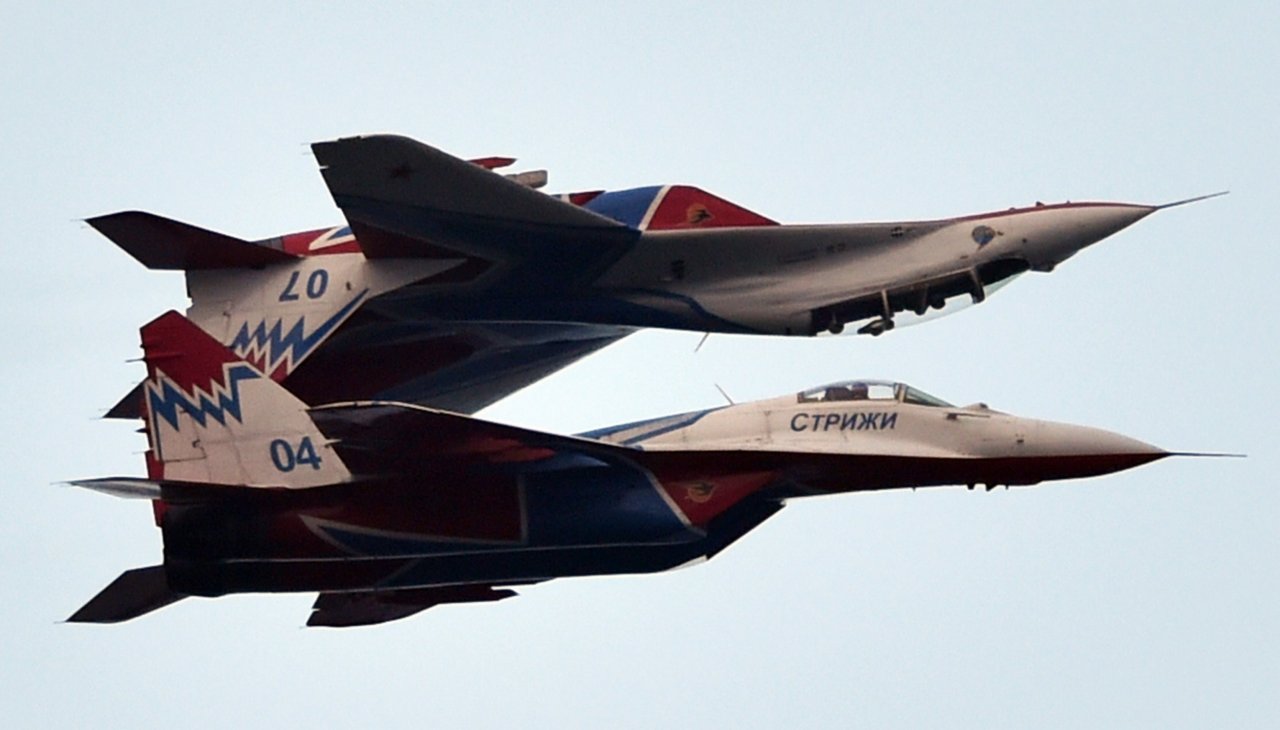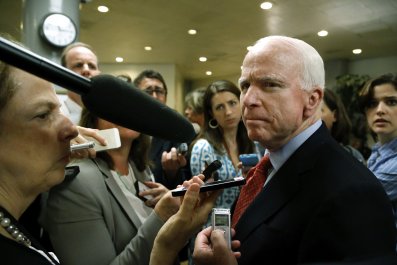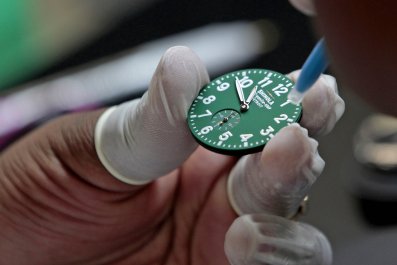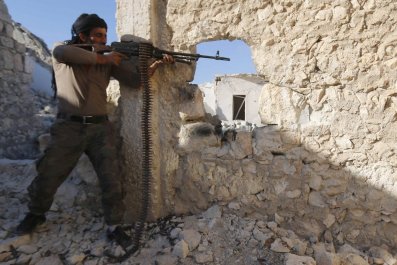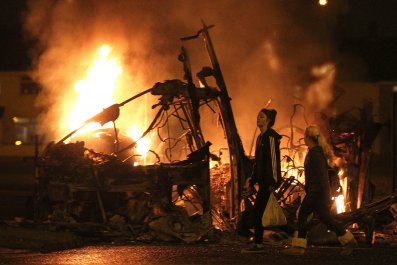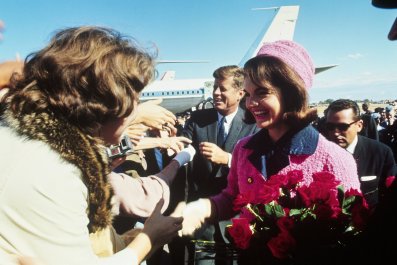No sooner does Mikhail Gorbachev declare that the world is "on the brink" of a new Cold War than a report accuses Russia of putting civilian lives at risk from its "aggressive" and "highly disturbing" military tactics.
The European Leadership Network (ELN), a London-based think tank, claims that some Russian military planes have declined to use transponders to identify their positions when they are on forays into European airspace and therefore can not be detected by air traffic controllers.
The report details tensions prompted by the Ukraine crisis and concludes that it "adds up to a highly disturbing picture of violations of national airspace, emergency scrambles, narrowly avoided mid-air collisions, close encounters at sea and other dangerous actions happening on a regular basis over a very wide geographical area".
Apart from routine or near-routine encounters, the report identifies "eleven serious incidents of a more aggressive or unusually provocative nature, bringing a higher level risk of escalation". Three of these incidents were classified as "high-risk", which, according to the report, means they "carried a high probability of causing casualties or a direct military confrontation". One of these involved a near collision on March 3rd between a regular civilian Scandinavian Airlines (SAS) flight, which took off from Copenhagen, and a Russian reconnaissance plane operating without its transponder functioning. The civilian aircraft, with 132 passengers on board, was on its way to Rome and avoided the Russian plane by just 90 meters. This near-miss happened 50 miles south east of Malmo, Sweden. A collision was apparently avoided thanks only to good visibility and the alertness of the passenger-plane's pilots.
Christopher Yates, head of Yates Consulting, which specialises in aviation safety, told Newsweek: "It is both surprising and alarming that the two planes came into such close proximity with each other, given that there is an air-zone around each airport aimed at detecting such incidences." Yates said the Russian plane would have appeared as a "primary radar signal", which shows up as a small blip on the screen.
"While you would be able to see that there was an unidentified plane in the airspace, you would have no details as to what altitude it is flying, where it is going or where it is coming from."
Had these two planes collided, with a major loss of civilian life comparable to the downing of flight MH17 over eastern Ukraine, it would have led, at the very least, to a new round of Western sanctions on Russia and increased NATO patrolling in the Baltic Sea.
According to the ELN report, Russian bomber aircraft had also been spotted undertaking "mock-bombing raid" missions against the U.S. in the Labrador Sea, near Canada. In a separate incident, Russian Bear bombers were intercepted by RAF Typhoons as they neared UK airspace. This came on October 31st, just two days after NATO radars detected a group of Russian planes engaged in "significant military manoeuvers" in areas as far-reaching as the Black Sea and the Atlantic Ocean.
According to Glenmore Trenear-Harvey, an intelligence analyst and expert on air security: "This included SU-35s and SU-27s, two high-performing fighter-bombers. To have planes like these flying without an identity is very frightening."
This infringement of air regulations led to jets being scrambled from eight countries including NATO's own Baltic air policing force.
"Scrambles and intercepts are standard procedure when an unknown aircraft approaches NATO airspace," said a NATO spokesman. "However, such flights pose a potential risk to civil aviation because Russian military often do not file flights plans, or use on-board transponders. This means that civilian air traffic control cannot detect these aircraft nor ensure there is no interface with civilian air traffic."
Another incident was the huge military operation launched in waters off Stockholm last month to find what has been widely speculated to be a damaged Russian submarine. The intelligence operation involved more than 200 men, with Sweden warning that it was prepared to use military force to bring any submerged submarines to the surface.
According to NATO, there have been more than 100 interceptions of Russian aircraft in 2014 so far, more than three times the number in 2013. NATO has responded to Russia's incursions into Ukraine by stepping up its ties with Kiev and bolstering air patrols and exercises with its eastern and central European members.
Russia in turn has decided to pursue a more active and aggressive military policy of its own, returning to the sorts of flights and activities from the Cold War years that were used regularly to test out NATO defences.
According to Nigel West, an intelligence community historian, Russia's aggressive encroachments have two main purposes: "The first is to test the reaction time to see how quickly the planes are detected, intercepted and escorted out," he said. The second reason, he said, is to enter hostile airspace to force the adversary to switch on its radars.
"As NATO radars are switched on to detect Russian planes, Russian military can detect where the radars are being transmitted from, and these immediately become a target," he said. According to West, it is feared that anti-radiation missile weapons, referred to as Shrike, could be used to follow radar beams back to the transmitter and then bomb the radar instalment. "The moment you have the ability to take out a radar station you have the opportunity to launch a strike without detection."
Another of the high-risk incidents involved the abduction of an Estonian security service operative from a border post on Estonian (and hence NATO) territory. He was later taken to Moscow and accused of espionage.
The ELN report makes three broad recommendations. It calls on the Russian leadership to "urgently re-evaluate the costs and risks of continuing its more assertive military posture", adding that "Western diplomacy should be aimed at persuading Russia to move in this direction". It concludes that "all sides should exercise military and political restraint".
But given the unresolved tensions over Ukraine, the overall trajectory of current Russian foreign policy and the pressures coming from those in NATO who feel most threatened, a return to Cold War politics looks likely.
German Chancellor Angela Merkel used the 25th anniversary of the fall of the Berlin Wall to exert pressure on Putin by referring directly to Ukraine. "We can change things for the better—that is the message of the fall of the Berlin Wall," she said at the opening of a memorial center. "That applies particularly to people in Ukraine, in Syria and in Iraq and in many other regions of the world where freedom and human rights are threatened or even trampled."
But she did not go as far as her guest of honour at the celebrations in Berlin, Mikhail Gorbachev, whose reforms as leader of the Soviet Union created the atmosphere that eventually allowed for the Iron Curtain to be torn down.
"The world is on the brink of a new Cold War. Some are even saying that it has already begun," Gorbachev, 83, said in a speech on Saturday. He also said that "bloodshed in Europe and the Middle East against the backdrop of a breakdown in dialogue between the major powers is of enormous concern."
Correction: This article originally quoted an expert as saying that TU-22 Blinders were among the Russian planes detected by NATO. These were in fact taken out of service in the 1990s.



